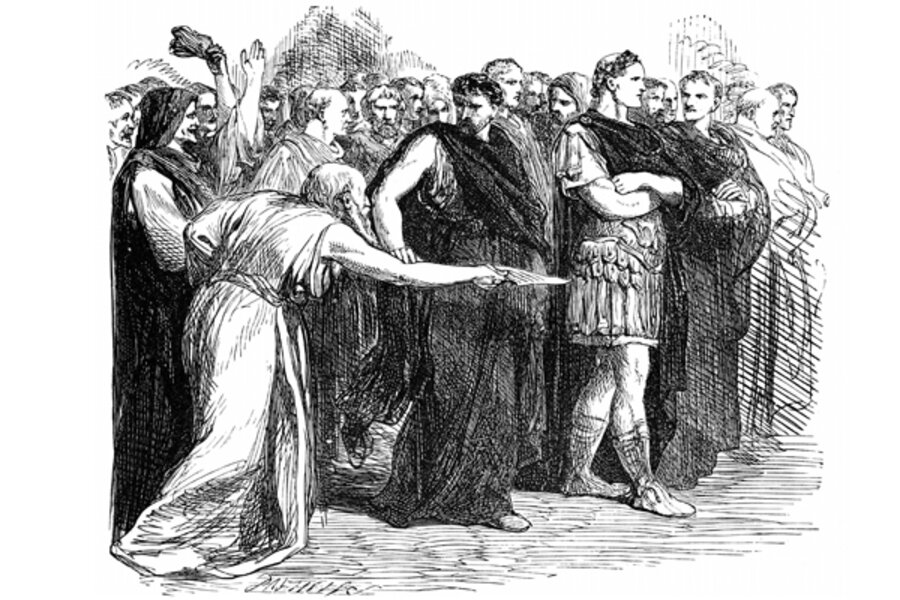Ides of March: What's an ide anyway? The whole sooth.
Loading...
"Beware the Ides of March," is good advice, especially if you happen to be an ancient Roman dictator. But what are ides anyway, and how do you avoid them?
The word "ides," which rhymes with "hides," is actually singular. According to the Roman calendar, the ides was the day of the full moon. It corresponded to the 13th day in most months, but the 15th of March, May, July, and October.
The ancient Romans didn't think there was anything particularly inauspicious about the Ides of March, or the ides of any other month for that matter. The day was usually an occasion for honoring the deity of the month, Mars, by having a military parade. But in 44 BC, March 15 stood out as an especially bad day for at least one ancient Roman: Julius Caesar.
According to Plutarch's Parallel Lives, Caesar saw a soothsayer who had foretold that great peril would come to him no later than the Ides of March. As the dictator was on his way to the Senate-House, where he would meet his untimely end, he saw the soothsayer and said, "Well, the Ides of March are come."
"Aye, they are come," responded the seer, "but they are not gone."
The scene is famously repeated in Act 3, scene 1 of Shakespeare's "Julius Caesar."
But was Caesar actually assassinated on this day? The historical record agrees that he died on the 15th day of Martius, but, in the final years of his life Caesar set about fiddling with the Roman calendar, which, because politicians had the authority to add days by fiat, had fallen out of sync with the earth's actual orbit around the sun.
The Julian Calendar, was first implemented in 45 BC and continued to be in widespread use until the 18th century, when it was supplanted by the Gregorian Calendar. But in the early days of the Julian Calendar, the leap year cycle was not yet stabilized. Thus most scholars think that the actual date of Caesar's assassination is probably March 14, 44 BC.
The Julian Calendar assumed that the solar year lasted exactly 365.25 days, adding a leap year every four years. This was pretty close, but it was actually about 11 minutes too long. This added about three days every four centuries, slowly pushing Western civilization out of phase with the sun. The Gregorian Calendar, first proposed in 1582, sought to balance out the drift. As countries adopted it, they had to advance their calendars 10 or 11 days.
But back in 44 BC, the Julian Calendar was probably three days behind the Gregorian Calendar. So if you're inclined to celebrate the anniversary of Caesar's assassination, and if you get hung up on these kinds of details, you'll have to wait until March 11 of next year.





